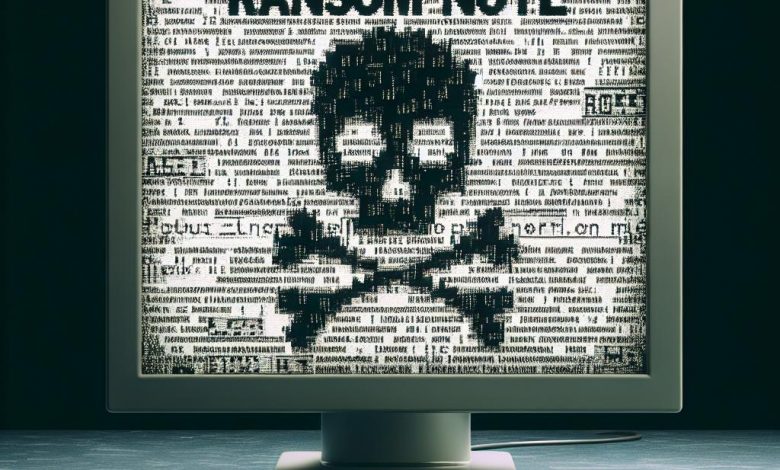
Table of Contents
A Deep Dive Into Petya Ransomware: Origins and Impact
What Exactly is Petya Ransomware?
Petya ransomware represents a family of malware that targets the Windows operating system, specifically aiming to compromise the Master Boot Record (MBR) of a victim's computer. This type of cyberattack interferes with the normal boot process, leading to the display of a fake "chkdisk" screen that misleads the user into thinking a system repair is underway. However, the malware is, at this time, encrypting files on the system. Once the encryption process is complete, victims are presented with an ASCII ransom note, making it clear that their files have been encrypted and demanding a ransom payment in Bitcoin in exchange for a decryption key.
Unlike traditional malware, which requires some form of user interaction to infect a system, the latest variant of Petya that caused global havoc in 2017 spread through the exploitation of vulnerabilities within Windows networking protocols, akin to the infamous WannaCry ransomware. This variant, sometimes differentiated as NotPetya, leveraged the EternalBlue exploit—initially developed by the U.S. National Security Agency and later leaked—to proliferate through networks, rendering systems unusable and leading to significant financial and operational impacts for affected organizations.
The Global Spread of Petya: A Timeline
The emergence of Petya ransomware traces back to 2016, but it was in June 2017 that a new variant sparked a major global incident. Starting with a concentrated attack against Ukrainian infrastructure, including government systems and national banks, the ransomware quickly transcended borders, affecting countless entities across continents.
- June 27, 2017: A newly updated variant of Petya ransomware begins propagating, leveraging the EternalBlue exploit among other methods for rapid spread.
- Initial Expansion: The attack, originating from compromised Ukrainian tax software, quickly escalates beyond Ukraine, affecting thousands of systems worldwide, from Europe to North America.
- Economic Impact: This outbreak, causing disruptions in various sectors—including shipping, oil, and banking—resulted in an estimated $10 billion in damages, showcasing the destructive capacity of such cyber threats.
- Immediate Responses: Despite quick actions by cybersecurity communities and affected organizations, the unique characteristics of Petya, especially its wiper-like behavior disguised as ransomware, made recovery efforts futile for many.
The rapid spread of Petya in 2017 underlines the critical vulnerabilities that exist within global cybersecurity infrastructure. The incident not only manifested the advanced capabilities of modern malware but also highlighted the importance of comprehensive cybersecurity measures, including timely patches and network hygiene, to mitigate the risks posed by such malicious cyber activities.
How Petya Ransomware Infects Your System
Initial Infection Vectors and Lateral Movement
The Petya ransomware has a multi-faceted approach to infiltrate and spread across networks, exploiting various channels and vulnerabilities within systems. Initial infection vectors are critical to understanding how Petya gains access to a targeted system, initiating its malicious activities.
Although the exact initial vector for the later variants of Petya, including NotPetya, was not explicitly identified through email phishing as in previous incidents, evidence strongly suggested the use of a compromised Ukrainian accounting software. Attackers were believed to have breached the software's update mechanism to deliver the malware as a seemingly legitimate update.
Once Petya is on a system, it employs several strategies for lateral movement, or the process of spreading from the infected host to other systems within the network:
- Local Network Scanning: Petya attempts to discover and enumerate ADMIN$ shares across the local network, thereafter copying itself to these shares and executing remotely via tools like PSEXEC.
- Windows Management Instrumentation: Utilization of the WMIC tool to execute the malware on remote hosts found within the local subnet, leveraging stolen credentials where possible.
- Exploitation of Vulnerabilities: Notably, Petya also makes use of the EternalBlue exploit, targeting systems that have not applied the critical MS17-010 security patches, to further its spread across networked machines.
This multi-pronged approach to dissemination not only demonstrates the sophisticated nature of Petya but also underscores the significance of maintaining network security hygiene and promptly applying security patches to mitigate such threats.
Understanding the Encryption Mechanism of Petya
Petya ransomware's encryption mechanism is particularly insidious, affecting the core of the Windows operating system's functionality. Upon successful infection, Petya targets the Master Boot Record (MBR) of the victim's system. The malware replaces the Windows bootloader with a malicious payload that triggers a system reboot.
During the reboot process, victims are presented with a fake "chkdisk" operation, supposedly scanning and repairing hard drive errors. Unbeknownst to the user, this facade serves a dual purpose: it masks the background encryption process of the NTFS Master File Table (MFT) and ensures uninterrupted completion of the encryption task.
Upon conclusion of the fake repair process, an ASCII ransom note is displayed on the screen, demanding payment in Bitcoin to recover the encrypted files. However, analysts have identified that Petya's encryption, particularly in its NotPetya variant, may actually render affected files irrecoverable, classifying it as a "wiper" rather than conventional ransomware.
The uniqueness of Petya's encryption approach, combined with its ability to spread rapidly through networks, makes it a formidable threat. It highlights the critical need for regular system backups, the immediate application of security updates, and the cultivation of awareness around suspicious software updates or emails as primary defenses against such aggressive malware campaigns.
Proactive Measures Against Petya: Prevention Tips
Securing Your Network Against Petya
In the era of sophisticated malware threats like Petya, securing your network becomes a paramount concern. Organizations and individuals alike must adopt a proactive stance to shield their digital assets from potential ransomware infiltration and spread. Regarding network security against Petya, several strategies emerge as critical in fortifying defenses:
- Implement Strong Access Controls: Limiting user access to vital systems and data can significantly reduce the risk of infection. Utilize role-based access controls and ensure users have only the permissions they need for their roles.
- Keep Software Up to Date: Regularly updating all software, especially operating systems and applications known to be targeted by Petya, can close security gaps exploited by the ransomware.
- Employ Network Segmentation: Dividing network resources into segments can help contain the spread of Petya if infiltration occurs. Efficient segmentation involves separating critical data and services from the broader network, making lateral movement more challenging for the malware.
- Utilize Advanced Threat Detection Tools: Tools that can identify and quarantine threats based on behavior can significantly reduce the time Petya has to infect systems. Such tools frequently update to recognize new malware strains, providing a dynamic defense layer.
- Conduct Regular Security Training: Employees should be educated on the risks of phishing attempts, suspicious links, and unverified software updates, as these are common vectors for ransomware distribution.
By integrating these strategies, organizations can create a robust defense mechanism against Petya, safeguarding their network infrastructure from this aggressive threat.
Essential Security Patches and Updates to Counteract Petya
The role of security patches and system updates in countering malware like Petya cannot be overstated. These preventative measures close vulnerabilities that ransomware exploits to gain unauthorized access to systems. Here are key areas to focus on:
- Apply Security Patches Promptly: Regularly monitor for and apply security patches released for your operating system and all software applications. Emphasize patching known vulnerabilities that Petya and similar ransomware variants exploit.
- Monitor for and Install Antivirus Updates: Ensure your antivirus software is up-to-date with the latest virus definitions. Antivirus providers frequently update their software to detect and block new malware strains, including variants of Petya ransomware.
- Utilize Web and Email Filters: Implementing web and email filtering solutions can block malicious websites and email attachments known to distribute ransomware. Configure these filters to automatically update to adapt to new security threats.
- Enable Automatic Update Features: Where possible, enable automatic updates for your operating system and critical applications. This ensures that your system receives the latest patches without delay, further reducing the window of opportunity for Petya to exploit susceptibilities.
Adhering to these patch management and software update practices forms a critical barrier against the pervasive threat posed by Petya ransomware. By maintaining a rigorous update schedule, individuals and organizations can significantly diminish the risk of infection and subsequent data loss.
Step-by-Step Guide: Removing Petya Ransomware From Your System
Before the Attack: Preparing and Protecting Your Data
Protection against Petya ransomware begins with preemptive measures aimed at mitigating risks and ensuring data integrity. Preparing for a potential ransomware attack involves a combination of technical safeguards, regular system backups, and cybersecurity awareness. Here are key strategies to adopt:
- Regular Data Backup: Perform frequent backups of critical data, both offline and in the cloud. Ensure these backups are not persistently connected to the systems they are backing up to prevent them from being compromised during an attack.
- Update and Patch Systems: Keeping your operating system, software, and firmware up to date is crucial. Apply security patches as soon as they become available to close vulnerabilities that could be exploited by ransomware.
- Security Software: Equip your systems with robust antivirus and anti-malware solutions. Ensure real-time scanning is enabled and that the software is regularly updated.
- Phishing Training: Educate yourself and your team on the dangers of phishing scams, the primary vector through which ransomware like Petya spreads. Learning to recognize suspicious emails and links can prevent ransomware from gaining a foothold.
- Access Control: Practice the principle of least privilege by limiting user account permissions. Only grant administrative access to users who require it for their roles.
During the Attack: Immediate Actions to Mitigate Damage
Once a Petya infection is detected, acting swiftly can significantly reduce its impact. Immediate actions focus on containing the ransomware, protecting unaffected systems, and eradicating the infection without making rash decisions. Here's what to do:
- Isolate the Infected Device: Immediately disconnect the infected device from the network and any external drives to prevent the ransomware from spreading.
- Identify the Infection: Quickly determine the type of ransomware to inform your mitigation strategy. In the case of Petya, recognizing the altered boot process and ransom note can aid in identification.
- Engage Your Incident Response Plan: Activate your pre-defined response plan, which should include notifying your IT department or a cybersecurity firm to begin containment and eradication efforts.
- Document Everything: Keep a detailed record of your observations and actions. This documentation will be invaluable for recovery efforts and possible legal proceedings.
- Notify Law Enforcement: Report the ransomware attack to appropriate authorities. They may provide additional support and advice.
After the Attack: Recovery Strategies and Data Restoration
Recovering from a Petya ransomware attack involves careful steps to restore systems and data, as well as measures to prevent future incidents. Post-attack strategies include:
- Eradicate the Ransomware: Use a trusted anti-malware tool from a non-compromised device to create a bootable antivirus disk. Use this disk to boot the infected system and remove the ransomware.
- Assess Damage: Once the malware is removed, evaluate the damage to files and systems. Determine what data has been encrypted and catalog any lost or compromised information.
- Restore from Backups: After ensuring no traces of the ransomware remain, begin the process of restoring data from backups. Verify the integrity of the data being restored to avoid reinfection.
- Review Security Posture: Analyze the attack to understand how it was successful and identify any security gaps. Update your security policies, tools, and protocols accordingly to defend against future threats.
- Continuous Monitoring: Implement monitoring tools and practices to watch for signs of a repeat attack or indications of residual malware that may have been missed during cleanup.
Successfully overcoming a Petya attack and preventing future infections relies heavily on preparedness, rapid response, and thorough recovery efforts. Following these guidelines can help minimize damage and facilitate a return to normal operations with enhanced cybersecurity resilience.




